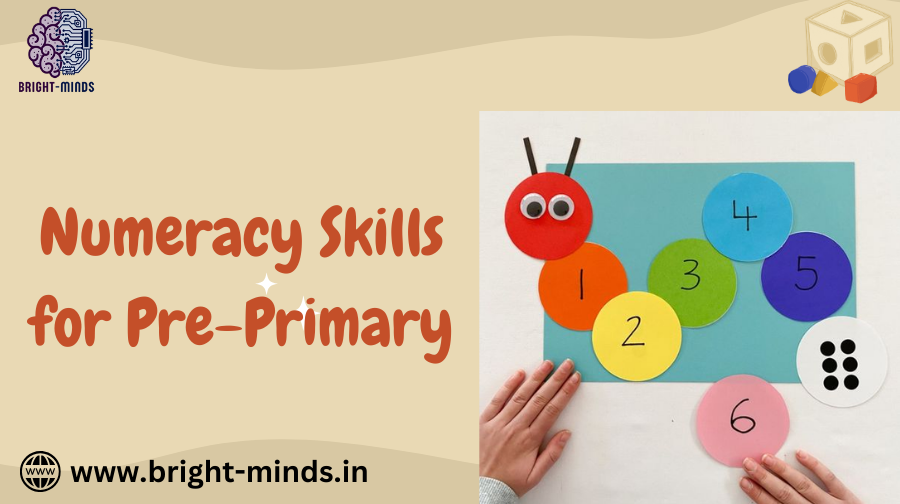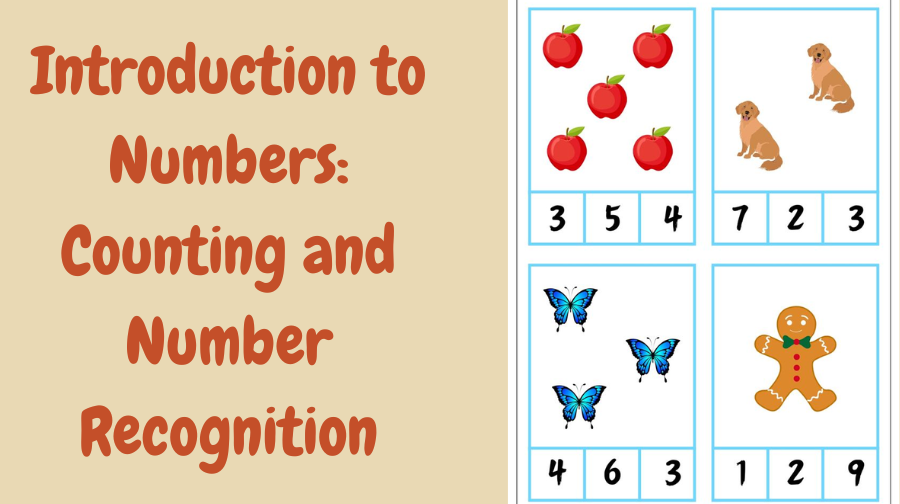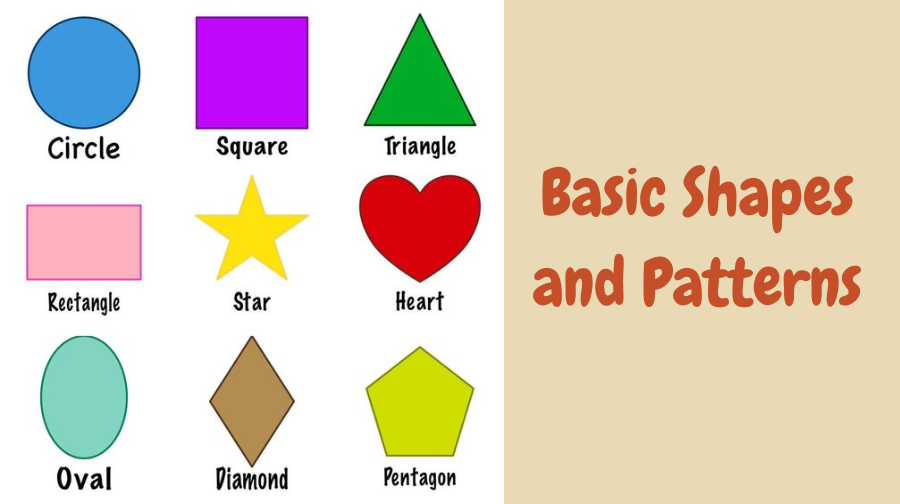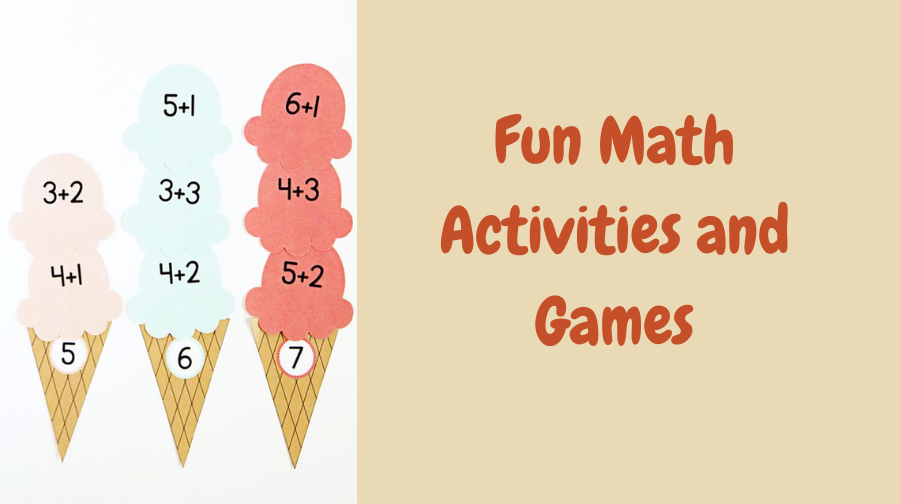
Discover effective strategies and activities for developing Numeracy Skills in Pre-Primary children. Learn how to make early math fun and engaging.
Numeracy skills are foundational for a child’s academic success and are vital from an early age. For pre-primary children, developing these skills through engaging and interactive methods is crucial. Early exposure to numbers, shapes, and patterns not only prepares them for formal schooling but also fosters a love for learning. In this comprehensive guide, we’ll explore how to introduce numeracy skills to pre-primary children, focusing on counting, number recognition, basic shapes, patterns, and fun math activities.
Importance of Early Numeracy Development
Numeracy in pre-primary education refers to the ability to understand and work with numbers. It encompasses a range of skills including counting, recognizing numbers, understanding shapes, and identifying patterns. Early numeracy skills are closely linked to later success in mathematics and other academic areas. Children who develop strong numeracy skills in the early years are more likely to excel in math and have a positive attitude toward the subject throughout their educational journey.
Introduction to Numbers: Counting and Number Recognition

1. Counting: The First Step in Numeracy Counting is often the first numeracy skill children learn. It’s a fundamental skill that serves as the building block for more complex mathematical concepts. Here’s how you can help pre-primary children develop counting skills:
- Counting Objects: Use everyday objects like toys, blocks, or fruits to teach children how to count. Encourage them to touch and move each item as they count to help solidify the concept.
- Counting Songs and Rhymes: Incorporate counting songs and rhymes into daily routines. Songs like “Five Little Ducks” or “Ten in the Bed” make counting fun and memorable.
- Counting Games: Engage children in games that involve counting, such as hopscotch, board games, or counting steps while walking.
2. Number Recognition: Identifying and Understanding Numbers Recognizing numbers is another crucial skill that children need to develop early on. Number recognition involves not just being able to identify numbers but also understanding what each number represents.
- Number Flashcards: Use flashcards with numbers and corresponding pictures to help children associate numbers with quantities. For example, a card with the number “3” could have three apples on it.
- Number Matching: Create activities where children match numbers to groups of objects. For instance, match the number “4” to a group of four crayons.
- Number Tracing: Encourage children to trace numbers using their fingers, crayons, or in sand. This helps them learn the shape of each number while reinforcing recognition.
Basic Shapes and Patterns: Building Blocks of Geometry

1. Learning Basic Shapes Understanding shapes is a critical component of early numeracy. Shapes form the basis of geometry, and recognizing them is essential for spatial awareness and problem-solving.
- Shape Sorting: Provide children with various shapes made from materials like cardboard, foam, or plastic. Ask them to sort the shapes based on their characteristics (e.g., circle, square, triangle).
- Shape Hunts: Organize a “shape hunt” where children search for objects of different shapes around the classroom or home. For example, a clock is a circle, and a book is a rectangle.
- Shape Art: Incorporate shapes into art activities. Have children create pictures or patterns using different shapes, which helps reinforce their understanding in a creative way.
2. Recognizing and Creating Patterns Patterns are a fundamental aspect of mathematics, and recognizing them helps children develop logical thinking and problem-solving skills.
- Pattern Blocks: Use blocks or beads in different colors and shapes to create simple patterns (e.g., red-blue-red-blue). Encourage children to continue the pattern or create their own.
- Pattern Games: Engage children in games that involve identifying or creating patterns. For example, create a pattern with clapping and stomping and ask them to replicate it.
- Pattern in Nature: Explore patterns in the natural world, such as stripes on a zebra, petals on a flower, or the arrangement of leaves on a plant. Discuss these patterns with children to enhance their observation skills.
Fun Math Activities and Games

Learning math should be a fun and enjoyable experience, especially for pre-primary children. Incorporating games and activities into numeracy education makes learning interactive and engaging.
1. Math Through Play Children learn best when they’re having fun. Here are some play-based math activities:
- Building Blocks: Use building blocks to teach counting, addition, and subtraction. For example, “If we add two more blocks, how many do we have now?”
- Pretend Play: Set up a pretend shop where children can “buy” and “sell” items using play money. This helps them understand numbers, counting, and basic addition.
- Board Games: Traditional board games like “Chutes and Ladders” or “Snakes and Ladders” introduce children to numbers and counting in a fun context.
2. Technology in Numeracy Education Incorporating technology can also enhance numeracy skills through interactive and educational apps:
- Counting Apps: There are many apps designed to help children with counting and number recognition. Look for apps that are engaging, visually appealing, and age-appropriate.
- Shape and Pattern Games: Apps that focus on shapes, patterns, and basic geometry can be a great supplement to hands-on activities.
3. Outdoor Math Games Take learning outside with these fun outdoor math activities:
- Number Hopscotch: Draw a hopscotch grid with numbers on the pavement. As children jump from square to square, they can say the numbers aloud.
- Counting Nature Walk: Go on a nature walk and count different objects along the way, like the number of trees, birds, or flowers.
- Shape Obstacle Course: Set up an obstacle course where children have to identify and move through different shaped areas, like a circle of hula hoops or a square made of ropes.
The Role of Parents and Educators in Numeracy Development
Both parents and educators play a crucial role in a child’s numeracy development. Here’s how they can support early math skills:
1. Encouragement and Positive Reinforcement Praise children for their efforts in learning numeracy skills, even if they make mistakes. Positive reinforcement builds confidence and encourages them to keep trying.
2. Incorporating Math into Daily Life Use everyday situations to teach math. For example, ask children to count the number of apples in the basket, recognize numbers on signs, or identify shapes in their surroundings.
3. Creating a Math-Friendly Environment Ensure that the home or classroom environment is rich in math-related materials, such as number charts, shape posters, and math-related books. Providing access to these resources encourages independent exploration of math concepts.
Conclusion
Numeracy skills form the foundation for a child’s future academic success. By introducing counting, number recognition, shapes, and patterns in a fun and engaging way, we can help pre-primary children develop a strong mathematical foundation. Whether through hands-on activities, games, or technology, the key is to make learning math enjoyable and accessible. With the right support from parents and educators, children can build confidence in their numeracy skills and carry that confidence into their future academic endeavors.
you may be interested in this blog here:-
